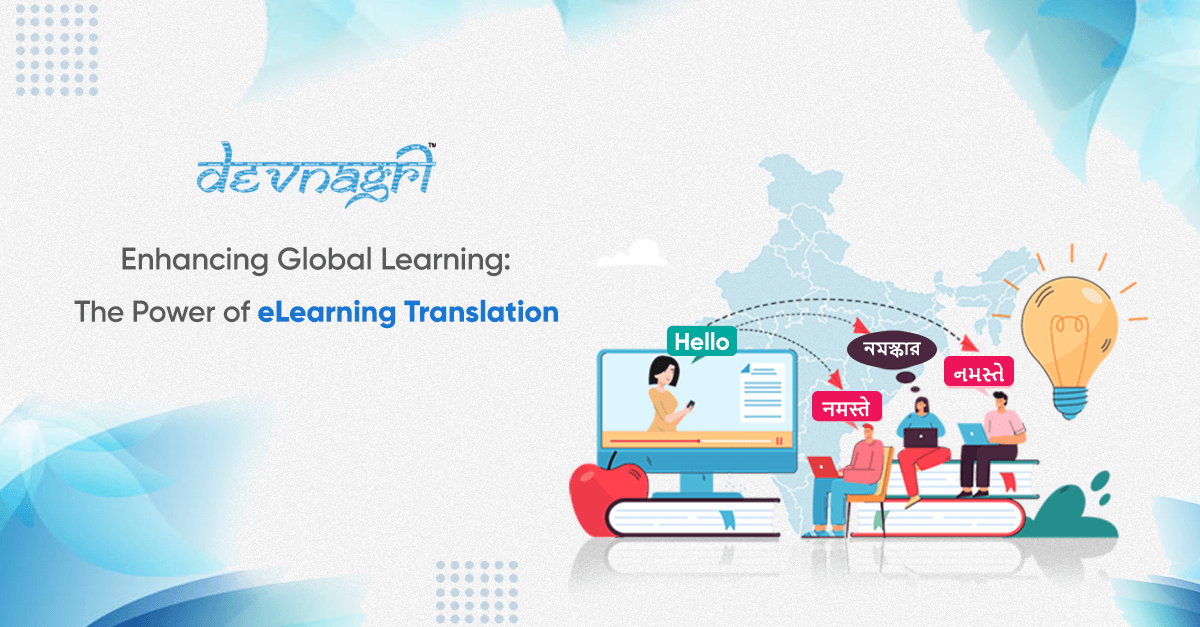
In today’s interconnected world, the demand for education knows no borders. With the rise of digital technology, eLearning has become a cornerstone of education, offering flexibility, accessibility, and scalability like never before. However, to truly harness the potential of eLearning on a global scale, one crucial aspect often overlooked is eLearning translation.
Also Read: Navigating the Complexity of Media Translation: Bridging Cultures, Connecting Worlds
Imagine a scenario where a student in Japan wants to enroll in an online course offered by a prestigious university in the United States. Despite having the necessary skills and motivation, language barriers prevent them from accessing the course content. This is where eLearning translation steps in, breaking down language barriers and making education accessible to learners worldwide.
Also Read: Navigating the World of Publishing Translation: Bridging Cultures Through Words
The Significance of eLearning Translation
eLearning translation involves adapting course materials, videos, assessments, and other learning resources into multiple languages, ensuring that learners from diverse linguistic backgrounds can fully engage with the content. The benefits of eLearning translation extend far beyond mere language accessibility:
- Cultural Relevance: Language is deeply intertwined with culture. By translating eLearning content, educators can tailor the material to resonate with learners’ cultural backgrounds, fostering a deeper understanding and connection.
- Global Reach: Translation transforms eLearning platforms into global learning hubs, reaching learners in every corner of the world. This expanded reach not only benefits individual learners but also contributes to the democratization of education on a global scale.
- Enhanced Learning Experience: When learners can access course materials in their native language, comprehension improves, leading to a more enriching learning experience. This is particularly crucial in complex subjects where nuanced understanding is paramount.
- Market Expansion: For educational institutions and eLearning platforms, offering translated content opens doors to new markets and revenue streams. It enables them to tap into diverse demographics and cater to the needs of multilingual learners.
Also Read: Navigating the Complexities of Finance Translation: Ensuring Accuracy Across Languages
Overcoming Challenges in eLearning Translation
While the benefits of eLearning translation are clear, the process is not without its challenges. Here are some common hurdles and strategies to overcome them:
- Quality Assurance: Maintaining the integrity and accuracy of translated content is paramount. Working with professional translators who are proficient in both the subject matter and the target language is essential to ensure high-quality translations.
- Consistency: Consistency across translated materials is crucial for seamless learning experiences. Establishing style guides, glossaries, and terminology databases can help maintain consistency throughout the translation process.
- Technical Compatibility: eLearning platforms often rely on specific formats and technologies. Translated content must be compatible with these platforms, which may require additional testing and adaptation to ensure optimal functionality.
- Cost and Time Constraints: Translating eLearning content can be time-consuming and costly, especially for large-scale projects. Leveraging technology such as machine translation and translation management systems can streamline the process and reduce costs.
Also Read: Navigating Global Markets: The Vital Role of Website Translation
Best Practices for Effective eLearning Translation
To maximize the effectiveness of eLearning translation, it’s essential to follow best practices tailored to the unique requirements of online learning:
- Collaboration: Foster collaboration between subject matter experts, instructional designers, and translators to ensure accurate and contextually relevant translations.
- Multimedia Localization: Beyond text translation, consider localizing multimedia elements such as videos, images, and interactive simulations to provide a truly immersive learning experience.
- User Feedback: Solicit feedback from learners to identify any linguistic or cultural barriers they may encounter. This feedback loop can inform iterative improvements to the translated content.
- Continuous Improvement: Treat eLearning translation as an ongoing process rather than a one-time task. Regularly review and update translated materials to reflect changes in content, technology, and learner needs.
Also Read: Exploring the Power of Translation APIs: Breaking Language Barriers in a Connected World
Conclusion
eLearning translation holds immense potential to bridge linguistic divides and unlock access to education for learners worldwide. By embracing eLearning translation as an integral part of online education initiatives, educational institutions, businesses, and eLearning platforms can create more inclusive, impactful learning experiences that transcend geographical and linguistic boundaries. As we continue to harness the power of digital technology in education, let us not forget the transformative role that eLearning translation plays in shaping the future of learning on a global scale.





